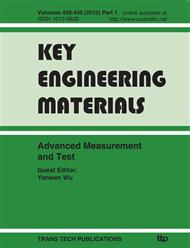[1]
A. Merlin, H. Back, Search for a minimal loss operating spanning tree configuration in an urban power distribution system, in Proc 5thPower Syst. Compt. Conf., Cambridge, U. K, (1975), pp.1-18.
Google Scholar
[2]
M. E. Baran and F. F. Wu, Network reconfiguration in distribution systems for loss reduction and load balancing, IEEE Trans. Power Del., vol. 4, no. 3, pp.1401-1407, Aug. (1989).
DOI: 10.1109/61.25627
Google Scholar
[3]
Y. T. Hsiao, Multiobjective evolution programming method for feeder reconfiguration, IEEE Trans. Power Syst., vol. 19, no. 1, pp.594-599, Feb. (2004).
DOI: 10.1109/tpwrs.2003.821430
Google Scholar
[4]
Y. Y. Hong, S. Y. Ho, Determination of network configuration considering multiobjective in distribution systems using genetic algorithm, IEEE Trans. Power Syst., vol. 20, no. 2, pp.1062-1069, May (2005).
DOI: 10.1109/tpwrs.2005.846067
Google Scholar
[5]
D. Das, A fuzzy multiobjective approach for network reconfiguration of distribution systems, IEEE Trans. Power Del., vol. 21, no. 1, pp.202-209, Jan. ( 2006).
DOI: 10.1109/tpwrd.2005.852335
Google Scholar
[6]
Y. S. Ding, H. B. Sun, and K. R. Hao. A bio-inspired emergent system for intelligent Web service composition and management, Knowledge-Based Systems, (2007), v20 (5), pp.457-465.
DOI: 10.1016/j.knosys.2007.01.007
Google Scholar
[7]
Hongbin Sun, Yongsheng Ding. A Scalable Communication Mechanism in Service Emergence Based on Bio-Network. Journal of Donghua University. v25(4) 31-37, (2008).
Google Scholar
[8]
E. Zitzler, M. Laummans, and L. Thiele. SPEA2: Improving the strength pareto evolutionary algorithm, TIK Report No. 103, Swiss Federal Institute of Technology (ETH), Computer Engineering and Networks Laboratory (TIK) , (2001).
Google Scholar
[9]
D. W. Corne, N. R. Jerram, J. D. Knowles, and M. J. Oates. PESA-II: Region based selection in evolutionary multiobjective optimization , In Proceedings of the Genetic and Evolutionary Computation Conference. pp.283-290, (2001).
Google Scholar
[10]
K. Deb, A. Pratap, S. Agrawal. A fast and elitist multi - objective genetic algorithm: NSGA-II, IEEE Transactions on Evolutionary Computation, vol. 6. 2., pp.182-197, (2002).
DOI: 10.1109/4235.996017
Google Scholar
[11]
D. Cvetkovic, I. C. Parmee. Preferences and their Application in Evolutionary Multi-objective Optimisation. IEEE Transactions on Evolutionary Computation, vol. 6(1), pp.42-57, (2001).
DOI: 10.1109/4235.985691
Google Scholar
[12]
X.N. Shen,Y. Guo Q.W. Chen. A multi-objective optimization evolutionary algorithm incorporating preference information based on fuzzy logic. Computational Optimization and Applications. Vol. 40, pp.55-64, (2008).
DOI: 10.1007/s10589-008-9189-2
Google Scholar


